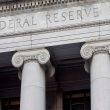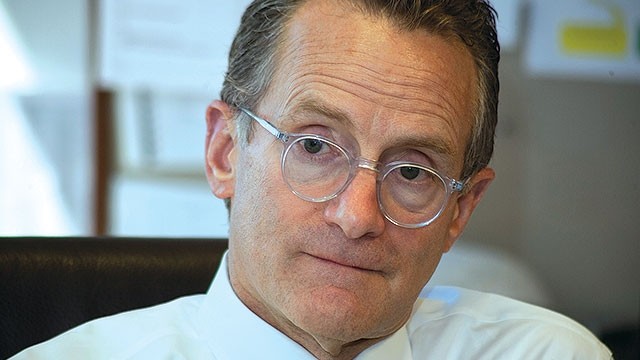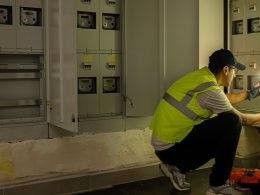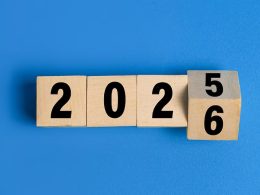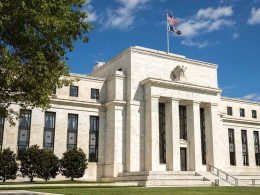Driving Into the Fog
“If you don’t know what’s coming, then you can wait,” says Dr. Peter Berezin,1 Chief Global Strategist and Head of Research at BCA Research. “But that hurts the economy.”
It’s an image that sticks. The economist’s voice—precise, composed, even understated—paints a picture of the U.S. economy as a driver easing into dense fog, uncertain whether to speed up or hit the brakes.
For Berezin, that fog is made of three elements: policy confusion, structural inflation, and delayed market recognition. Together, they’ve created a moment where optimism feels misplaced—and complacency, dangerous.
A Stagflationary Setup
BCA currently places the odds of a U.S. recession at 60%, warning that “the impact of tariffs is only now starting to kick in.” Inflation, he pointed out, has quietly reaccelerated—from 2.3% in April to 2.7%—while CPI swaps suggest it could reach 3.4–3.5% by mid-next year.
“The problem is that employment growth is very stagnant,” Berezin explains. “If inflation is going up and nominal wage growth is coming down, that means real income growth is going to be very, very weak.”
With savings rates depressed and delinquency rates climbing, the foundation of consumer spending—the bedrock of 70% of U.S. GDP—is cracking. “People can’t borrow more,” he says. “Which means they have to spend on income. But if income isn’t growing, then you’re not going to see much consumption growth.”
That, in Berezin’s words, is the anatomy of stagnation—and the inflation component only makes it worse.
The Fed’s Impossible Bind
“The Fed is in a bind right now,” Berezin says plainly. “They have two parts of their mandate—full employment and low and stable inflation. The problem is that inflation is closer to 3%, and while full employment might still be there now, we’re moving away from it.”
When both halves of the Fed’s mandate are in conflict, you get stagflation: an inflationary slowdown that forces policymakers into an unwinnable trade-off. “If unemployment rises,” he reasons, “the Fed will see that as the most important part of its mandate. But the problem is political interference—tampering with the Fed’s independence—and we don’t know how that’s going to impact longer-term inflation expectations.”
So far, markets haven’t lost faith. But Berezin’s warning is sharp: “The risk is that investors start to price in more inflation over the long haul.”
The Housing Freeze and the Tariff Trap
If you want to know how tight policy really is, Berezin says, look no further than the housing market. “Building permits are at multi-year lows. The inventory of new homes is back to where it was in late 2009. Homebuilder confidence is very, very weak.”
Housing, the most interest-rate-sensitive sector, has become the canary in the coal mine. “Home prices are still quite high,” he notes. “They need to come down to make homes more affordable—but they’re not going to come down significantly in the absence of a recession.”
Meanwhile, outside the AI boom, capital spending has collapsed. “Construction spending in manufacturing has been falling for close to a year,” Berezin says. “In the face of a trade war, are you really going to see much more construction? If you’re going to build a factory, you better be certain that factory will be profitable for many years. And right now, you don’t have that certainty.”
He calls the atmosphere “fog-like.” Companies, unsure of how tariffs and midterm politics will evolve, are sitting on their hands—“waiting, not acting.” That hesitation, he argues, is its own form of tightening.
The Mirage of Rate Cuts
“Markets should be careful about what they wish for,” Berezin cautions.
“Yes, rate cuts, all things equal, are good. But if the economy doesn’t need 300 basis points of cuts—and the Fed cuts rates anyway—what’s going to happen? Investors will start to get more worried about inflation.”
He describes the chain reaction: short-term relief, long-term pain. “Longer-term bond yields, which are more important to the economy than short-term ones, aren’t going to fall—they might even rise.” And they have. The 10- and 30-year U.S. Treasuries have moved higher even as markets priced in cuts.
“If the Fed restarts quantitative easing to cap those yields,” Berezin warns, “inflation expectations will go up. Then we’ll get the makings of a price-wage spiral. And after that comes price controls. That’s a killer for profit margins.”
His message to investors was simple: don’t stop at the first-order effect. “Rate cuts aren’t even the second step of quantitative easing,” he points out. “They’re the first step toward economic chaos.”
Short-Term Recession, Long-Term Inflation
Berezin’s base case over the next 12–24 months is a recession-led cooling of inflation—but not a long-term victory. “Near term, the recession will probably kill off whatever inflation we have,” he says. “Longer term, though, I’m much more worried about stagflation.”
The drivers of that concern are structural: aging demographics, deglobalization, and political interference in monetary policy. “Baby boomers are exiting the labor market. They’ll be spending—they’ve got a lot of wealth—but they’re not going to be producing and earning income anymore.”
Combine that with rising protectionism and challenges to Fed independence, and Berezin sees an inflationary bias built into the post-recession recovery.
Global Allocation: Gold, Yen, and Caution
Asked how to allocate capital in this environment, Berezin is clear: “Stocks are the biggest trap right now.”
“They’re more expensive in the U.S. than elsewhere, but even elsewhere they’re not that cheap. You can make a case for Europe and Asia in relative terms, but if the U.S. market falls, those markets will also decline.”
He points to safer harbours: “You want to be in gold. You want to be in more defensive currencies—cheaper currencies like the Japanese yen.”
The yen, he reminds us, “usually strengthens if there’s a major global growth shock—that happened during COVID, during the global financial crisis.”
Still, Berezin isn’t calling for panic—yet. “Wait until you see the whites of the recession’s eyes before you go fully defensive,” he advises. “Right now, being a little underweight stocks relative to cash—that’s perfectly fine.”
Cash Is King, but So Is Clarity
“For the next six to twelve months,” Berezin says, “cash is king.”
While he expects a tactical opportunity to buy bonds during a recession, he warns against rushing into duration now.
“Corporate spreads are very, very low. You’re not really buying yourself much of a defensive allocation by being in corporate debt.”
His advice: hold cash, stay nimble, and be ready to deploy when volatility opens the door. “If you get a sell-off in stocks,” he says, “you can use that cash to buy stocks. So it’s good to have it handy.”
AI: Promise, Hype, and the Lost Decade Risk
The conversation turns to artificial intelligence, and Berezin is quick to provide his perpective. “The risk is that AI does boost productivity—but it just takes a lot longer than people realize.”
Citing economist Robert Solow’s famous quip—“You can see the computer age everywhere but in the productivity statistics”—Berezin argues that investors might be replaying history. “We had a productivity boom starting in 1995—seven years after Solow made those remarks. So yes, AI will likely matter, but the gains could be delayed.”
Even when productivity rises, he adds, profits might not. “It wasn’t until 2005, just when productivity growth was starting to come down, that the profits from the Internet finally exploded. There was a lag of ten years.”
And those profits, he says, were driven by monopoly power. “You have to ask yourself—is AI going to lead to the sort of monopoly power that investors need to justify current valuations? I’m not sure.”
AI, he argues, lacks network effects and cheap scalability. “With AI, you’ve got to buy the Nvidia chips. You’ve got to build the data centers. There’s a lot of capex. It could end up like airlines—essential for productivity, but perpetually unprofitable.”
The Wile E. Coyote Moment
As the interview winds down, Berezin invokes a cartoon metaphor that captured the moment better than any spreadsheet could.
“Sometimes I see what I would characterize as these Wile E. Coyote moments for markets,” he says. “It’s clear something has gone wrong—housing is in pain, employment is weakening—and stocks are like, ‘Eh, who cares?’”
Then comes the punchline: “Wile E. Coyote has gone over the cliff. It’s only a question of when he looks down and sees there’s nothing.”
That image—markets suspended midair, legs spinning, gravity deferred—may be the best description of late-2025 euphoria yet.
Final Thoughts
Berezin’s closing advice is measured but urgent: “Keep your finger close to that exit button.” The U.S. economy, he implies, is still mid-stride over empty space—powered by momentum, not fundamentals. The fog hasn’t lifted. The cliff edge isn’t visible yet. But when markets finally look down, the fall could be swift.
Key Takeaways:
- Recession risk (60%) remains high; inflation likely to reaccelerate post-recession.
- Housing, capex, and income growth signal weakening fundamentals.
- Rate cuts may backfire, fueling inflation expectations and policy instability.
- Defensive allocations (gold, yen, healthcare, defense) favored; cash remains tactical king.
- AI optimism mirrors late-1990s overhype—profits may lag by a decade.
- Markets are in a Wiley Coyote moment: suspended confidence before the fall.
Footnote:
1 "BCA's Peter Berezin: Is this the Wile E. Coyote moment for investors?" AdvisorAnalyst, 28 Oct. 2025.
2 Photo by Tatiana Rodriguez on Unsplash
Copyright © AdvisorAnalyst

